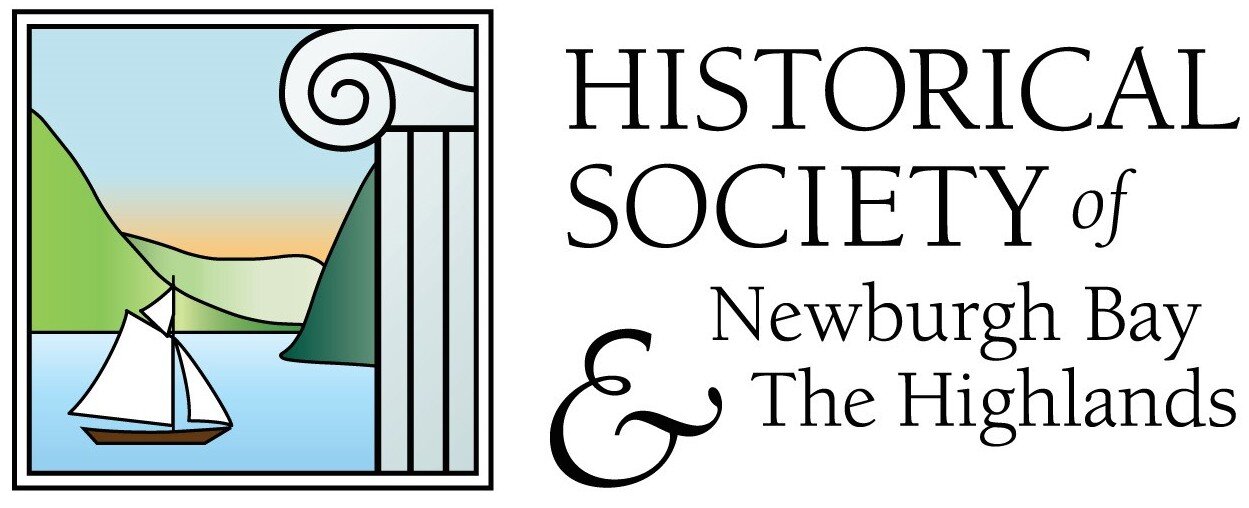Thomas and Mary Powell
Names linger in our local history, but few recall exactly who they were. One of those is the name Powell. Today, it is most known as an avenue, the one between Gidney Avenue and North Street that leads to Mount Saint Mary College. Yet, in the early nineteenth century, it would have been known as the name of a bank, a wharf, a warehouse, a shipping line and a giant steamboat, the Thomas Powell.
Thomas Powell, owner of a number of enterprises in the village of Newburgh didn’t arrive here as a man of means. His life is the sort that fuel epic dramas. He was orphaned at 12 when his father and older brother died during the War for Independence. His father, Henry and his brother James did not die in a battle but in Long Island Sound while taking their farm goods to market. Their sail ferry capsized in a storm and Henry Powell, seeing his son struggling to hold on to the drifting mast, gave up his secure position on horseback in the water near shore and headed back out to rescue his boy. Both drowned. Henry had already survived capture from his first farm by the British and endured months on the British prison ship Jersey, then the Old Sugar House prison on land. 10,000 prisoners died in those places from starvation and sickness, but Henry made it out in a prisoner exchange. With the death of Henry and James Powell, the next two sons in the family of Welsh immigrants, Jacob (age 16) and Thomas (age 12) took over the farm to support their mother and three younger siblings.
Their migration upstate started in 1788 when they came to Washingtonville to farm, then to Marlboro to operate a small store and some lime kilns. Thomas tried to expand his business to New York City by opening a mercantile store in 1798 but was driven out by a yellow fever epidemic. That is when he settled on Newburgh as his base of freighting operations, a busy and growing port village with the beginnings of a road system leading to its docks and already busy sloop traffic to its docks.
Powell homestead facing Liberty Street in 1940.
In his time in Newburgh, Thomas Powell, was the driving force for much of the positive change that made Newburgh an economic center. He set up docks and wharves for freight forwarding and had a busy office on the corner of Water and Third Streets. In that block of Water Street, he established The Powell Bank, which provided capital for many other local businesses. When the Erie Canal opened in 1825, the Powell Bank invested in many enterprises that kept Newburgh from falling into great economic collapse. He new canal re-routed commerce from its overland routes to the port of Newburgh. It could have meant the end for most local business that depended on that commerce, but Powell and his partners invested in alternative plans to keep Newburgh thriving. Most notable was the Newburgh Steam Mills, a cotton mill that could operate all year long (as opposed to water-powered mills that shut down during frozen winter months). This mill alone employed hundreds of workers and set Newburgh up as a center of steam technology. Powell’s investments in the young Erie Railroad also saw to it that his hometown of Newburgh was not bypassed by the railroad but got its fair share of that new freight traffic too.
Thomas Powell married Mary Ludlow and the next in the line of Powell steamboats was named for her. The graceful lines of the steamboat Mary Powell are still praised as the most beautiful vessel ever to ply the Hudson. She ran from launching in 1862 until her retirement in 1920 so a few of Newburgh’s oldest citizens might still recall seeing her. Her captain was Mr. Absalom Anderson and, when the Mary Powell pulled into Newburgh, there was always a special horn salute to her namesake. Sometimes, Mrs. Powell would come down to board the ship for a ride to another Hudson River port. At those times, the captain would come down the gangplank, accept a fresh bouquet from Mrs. Powell that she had picked from her gardens up the hill and walk the old honored guest aboard. On deck, as in her pew at St. George’s Church, old Mrs. Powell was said to be recognized by the clinking that emanated when she walked. She had sewn deep pockets into her long black skirts and always carried essential tools like pins, scissors and her favorite gumdrops.
The home of Thomas and Mary Powell is long gone from the Newburgh landscape. After being purchased by the Jewish Community Center and demolished for their new recreation building, it was again purchased by Mount Saint Mary College to become Hudson Hall along the north end of their campus. Yet, on a Spring day when campus flowers begin to bloom, the little clicks of Mary Powell’s scissors might be heard echoing along the college paths.

